Introduction
For most of the history of academic publishing, the subscription model, where readers pay for new journal issues, has dominated. Recent years have seen a push against this model. There are two motivations for this push. Firstly, the research findings should be publicly available as it was publicly funded. Restricting access to journals behind paywalls limits science as the scientific community continues to build on past work. The common thinking on this topic is that it is ludicrous to expect institutions that supported the research to repurchase it for its community to read.
Secondly, the motivation for moving away from the subscription model centres around the publication timelines. Articles in printed journals, usually published in a few issues throughout the year, are made available months after they are accepted, finalised and electronically indexed even later. This time delay results in the ageing of the research, potentially impacting its timely relevance and, thus, its contribution.
The Open Access (OA) movement is a response to these issues. By changing the funding model, where the author pays, scientists and their institutions effectively open the research results to the public. Articles are made available as soon as they are finalised. A journal’s transition from a subscription to OA is commonly termed ‘flipping the journal’.
The a priori assumption in flipping journals is that removing the restrictions on readers will increase the number of readers, resulting in a corresponding increase in citations. However, this has not been the universal experience (Langham-Putrow et al., 2021), with many factors influencing the relationship between readership and citations.
Moving to an author-pays funding model (Gold OA) might discourage authors who could only afford the dramatically lower author-processing costs that were charged in the subscription model. ‘With a new publishing model comes the potential for new communities of authors and readers to gather around it’ (Lerro, 2018).
A third point, linked to the previous two, was the effect that flipping the journal would have on the reputation of the journal. Despite the many OA journals with solid reputations, there are still those that equate the Gold OA model with predatory practices. Many predatory journals have used the OA model to lure unsuspecting authors to part with their research funds under the promise of rapid publication, which is achieved by the complete disregard for scientific checks.
Lacking in the literature on flipping journals was the lived experience of a journal that moved to an OA model on these three related issues: the citation advantage, the changing communities and the reputation of the journal. This article presents the case of the South African Journal of Business Management (SAJBM) and explores the following research questions:
What has the impact of moving to OA been on the authorship profile of the SAJBM in terms of:
Volume of articles Geographical location of the authors Topics of the articles How has the move to OA impacted the citation behaviour in terms of:
Time to first citation Number and geographical region of citing articles Topics of citing articles What impact has the move to OA had on the journal’s reputation?
Growth of Open Access in South Africa
The timeline of OA initiation and global adoption has been well documented and will not be repeated here. The South African case is not as well described. The Registry of Open Access Repository Mandates and Policies (ROARMap, 2022) shows the first South African entry dating from 2005. In that year, De Beer (2005, p. 98) reported on the first survey that looked at OA awareness at a South African university, where only half of the respondents reported a working knowledge of OA journals and described OA initiatives as ‘disparate’ and isolated (De Beer, 2005). In another study published a year later, OA was reported not to be a factor influencing the choice of journal (Möller, 2006, p. 117). A number of researchers had reported not yet to have read any OA publications, with uncertainties around the peer-review process, potential impact and recognition in the South African review committees (Möller, 2006). Further results show the slow progress of OA at that time, ‘here is little likelihood of South African researchers choosing to publish in open access journals’ (Möller, 2006) unless there were more local OA journals (Möller, 2006).
Thankfully, the number of local OA journals has grown. In 2006, there were only five OA journals located in South Africa (De Beer, 2006, p. 13). Seven years later, this figure had grown to 43 (Nwagwu, 2013, p. 6) and 67 in 2015, dwarfed by Egypt’s 441 (Fox & Hanlon, 2015, p. 703). The growth continued in subsequent years, with 75 in 2015 (Ezema & Onyancha, 2017, p. 105) to 1291 listed in the Directory of Open Access Journals in 2022.
However, there is still room for further growth. Institutions with OA policies still support closed-access journals (e.g. Mousaion at the University of South Africa or Studies in Economics and Econometrics at Stellenbosch University). There is little to no pressure from institutions whose researchers serve on editorial boards to ensure that the journals move to OA, despite policies that provide pressure to authors. Should this oversight be addressed, there would be exponential growth in the near future of South African OA journals.
History of the South African Journal of Business Management
The first issue of the SAJBM was published in 1969 as the journal of the South African Association of Business Management. Professor D.C.U. Conradie, the president of the association’s council, was the first editor. It was funded through advertising that was included in the printed editions. The editorship rotated through various presidents and business schools until it settled at the University of Stellenbosch Business School (now Stellenbosch Business School) under the editorial eye of Prof. Eon van der Merwe Smit in 1999, with Marion Leurs as the managing editor.
The journal remained with Smit for the following 18 years, with Ilse Munnik taking over from Leurs in 2014. The editorship then passed to Prof. Mias de Klerk upon Smit’s retirement from the Stellenbosch Business School, with Dr Lara Skelly as the managing editor.
In anticipation of the move to an author-pays OA publishing model, the author processing charges were doubled in 2016 and 2017. In the years prior to changing the publishing model, there was no noticeable difference in the submissions to the journal, which provided the editors with some confidence that the OA publishing model could succeed. The author processing charges were increased in line with other OA journals in the country as well as within the discipline.
In 2018, the University of Stellenbosch Business School2 partnered with AOSIS, an independent South African publisher that had been publishing OA material since 1999 and currently houses 45 scholarly journals. AOSIS is a local publisher of good repute that the editorial team had a good experience with a track record of efficient management of OA journals. The transition took several months and included moving old issues to the new platform, communicating the funding model change to potential authors and recreating the reviewer database.
By 2019 it was clear that the OA model was financially sustainable. What was not yet apparent was the effect that changing to the OA model would have on the journal itself.
Methods
Given that the SAJBM transitioned to an OA model during 2018, the years between 2019 and 2021 (inclusive) were taken as the 3 years post-OA. As a comparison, data from 2015 to 2017 were taken as the pre-OA years. All data were downloaded from Scopus in June 2022. The citation data include self-citation.
Quantitative measures were compared using a visual analysis generated in Microsoft Excel. Semantic maps are visual representations of word associations. They were created in VOSviewer (Leiden University, Centre for Science and Technology Studies, Leiden, Netherlands) (Van Eck & Waltman, 2010). It accepts bibliographic information from several sources. In this case, data from Scopus were used. Terms were extracted from titles, keywords and abstracts and visually displayed in a semantic map. The size of the circles represents the frequency of the terms; the more frequent, the larger the circle is displayed. The geographic spread shows the regularity of terms used together. The more regularly terms are used together, the closer they will be displayed. The VOSviewer then colour codes the terms that are most frequently clustered together.
For example, in Figure 2, ‘performance’ and ‘study’ regularly appear in the same article, and this is shown by the close proximity of these two keywords. While ‘study’ and ‘advertising’ are not that often used in the same article, as shown by the ‘advertising’ outlier.
The VOSviewer parameters were as follows: counting was set to full, as opposed to binary, minimum occurrences of terms were set to 10, and relevancy score was the default 60%. Full-size versions of these maps are available for download (Skelly, 2022).
Results
Profile of the South African Journal of Business Management
Volume of articles
Unfortunately, an accurate record of the number of submissions to the SAJBM before 2015 was not kept. However, it has been estimated to be around 300 manuscripts annually, while in the later years (2019–2021), the average number of submissions is 425, some of which was a result of the publication spike that many journals saw during the coronavirus disease 2019 (COVID-19) pandemic. To look at the impact on the volume of flipping the journal, the number of articles can be examined. There was a slight increase in the number of articles published in the OA model (see Figure 1). Whether this is a result of the attractiveness of the publishing model is not known. This increase could also be attributed to the move to an electronic submission management system, which coincided with the move to OA. One would assume that such a system would improve efficiency, resulting in more articles moving from submission to publication.
 |
FIGURE 1: Number of articles by author’s region. |
|
Geographic distribution of authors
The geographical distribution of authors has remained stable (see Figure 1).
Moving the journal to an OA model has not significantly impacted the journal’s identity, as an avenue for South African authors, despite the updating scope note to remove a focus on articles relevant to the South African context (SAJBM, 2022). In the later years, more articles were published from Africa and Asia; however, there has been a drop in publications from Europe, North America and Australia. The editors attribute the increase in publication numbers to the change in the editorial system, going from a manual system to an electronic one. The reduction in publications from Europe, North America and Australia remains a question to the editors.
Topics of articles
Semantic maps of the topics of the SAJBM are shown in Figure 2 for pre-OA and Figure 3 for post-OA.
 |
FIGURE 2: Semantic map of topics in South African Journal of Business Management articles 2015–2017. |
|
 |
FIGURE 3: Semantic map of topics in South African Journal of Business Management articles 2018–2021. |
|
Comparing the geographic spread of the two semantic maps, both show a unimodal distribution, with all terms closely located in one centre. This grouping indicates that there has been one community, which is most likely interdisciplinary, focused on topics related to business management, rather than two or more distinct communities, each addressing discreet topics. This distribution has not changed during the journal’s transition. The journal’s identity continues as one that speaks to issues on business management, broadly and interdisciplinarily, as the terms are clustered around ‘study’, showing the journal as one that is firmly rooted in the scientific method.
Topics have shifted somewhat, which can be seen in the change in the dominance of some keywords. For example, finance keywords (yellow in Figure 2) are less prominent post-OA, while organisational behaviour topics (green in Figure 3) are more prominent post-OA. The shifting interest is likely because of the natural shift within the discipline.
Who is citing South African Journal of Business Management?
The move to OA had a marginal impact on the authorship in the SAJBM. The impact on citations is of particular interest in changing models as the increase in citations is given as the primary advantage of OA to authors and journal editors.
Time to first citation
Prior to going OA, no articles were cited in their year of publication (see Figure 4); by opening the readership of the journal, articles appear to garner citations sooner, with 7.6% of the article published cited in their first year. It is reasonable to conclude that the speed of first citation has improved in the new model, with more articles cited sooner. The time to first citation has traditionally been overlooked as part of the citation advantage of flipping a journal.
 |
FIGURE 4: The percentage of cited articles, by years after publication. |
|
Volume and geography of citations
Removing the paywall to readers has had the hoped-for effect of increasing the citations, the most striking change. The journal has shown a clear citation advantage in the move to OA (see Figure 5). Some of this increase could be because of the increased research activity that the editors experienced during the COVID-19 pandemic, but certainly, a good part of the increase is as a result of the change in the publishing model. The visibility profile in terms of geography has largely remained unchanged.
It is interesting to observe that citations have not dramatically increased from under-resourced countries, represented by the bars for Africa and South America. Citations from Australia are also curiously low, despite the SAJBM’s presence on the Australian Business Dean’s Council list. The low citations from North America are understandable as the journal is not included in the FT50 journal listing. The number of citations from European authors is unexpected, considering the low interest from authors in that area to publish in the SAJBM.
Topics of citing articles
The semantic maps shown in Figure 6 and Figure 7 represent the topics in the articles citing the SAJBM articles published in 2015–2017 and 2019–2021, respectively. Figure 6 understandably has more topics: the SAJBM articles have had more years to attract citations.
 |
FIGURE 6: Semantic map of topics in articles citing the South African Journal of Business Management in 2015–2017. |
|
 |
FIGURE 7: Semantic map of topics in articles citing the South African Journal of Business Management in 2019–2021. |
|
The journal contributes to a diverse array of topics, as shown by the spread within the semantic maps. While thematic, the conversations are not clustered around one theme but rather around several. There are some citing communities that do not seem to have a corresponding community of authors, such as tourism (shown in Figure 6). The keywords around the scientific method, such as ‘positive relationship’ (Figure 6) and ‘significant relationship’ (Figure 7), show that the journal contributes to scientific communities and not only to practice audiences.
It is clear that the journal contributes broadly to the disciplines within business management, which supports the evidence on the authorship communities that the identity of the journal is rooted within business management.
Discussion
Citation advantage
There was a clear citation advantage to flipping the publishing model of the SAJBM to OA. Removing readership paywalls increased both the speed and volume of citations. This citation advantage was a primary hope of the editors, and it is gratifying to see that it has been realised. It confirms that the decision to move to an OA model was in the interests of our authors and readers.
Changing communities
From the geographical distribution of the authors and the topics revealed in the semantic maps, the communities of authors have not dramatically altered, although they have grown. It is somewhat unexpected that there has not been more significant growth in economically disadvantaged areas: the benefits to those areas are regularly toted as a strong advantage (Tennant et al., 2016).
The reputation of the journal
The journal’s position as a contributor to the academic discussions around business and management has not changed in the transition. The journal’s bibliometrics has shown an increase in line with the increased citations, which will add to the already strong reputation of the SAJBM.
Recommendations to other journals
The changing funding model of the SAJBM has been a fruitful experience and one that the editors would recommend to others. The journal has increased its readership while maintaining its identity and building its reputation.
Other editors and publishers may be concerned that their journals might not experience a citation advantage in flipping their publications. The benefit to the journal might come in other areas, such as reducing the lag to the first citation, effectively increasing the speed of impact, or changing communities of authors and readers to better align with the journal’s strategy.
It is a worthwhile exercise to track the journal’s communities and visibility. Data drawn from Scopus provided valuable knowledge for the SAJBM experience; should a journal not be indexed by citations, data from Google Scholar could provide similar insights.
In flipping the journal, the editors of the SAJBM were concerned that the increased author processing charges would prove a barrier to some authors. However, the higher author charges did not lead to a decrease in the interest of authors. For other publishers and editors with similar concerns, the SAJBM provides a case where this concern proved unfounded.
Looking to the future
In the planning of the SAJBM, there are three key issues that the editors are monitoring, which will inform future directions. These issues are discussed next.
Changing communities
As the journal’s reputation builds, the communities around the journal could likely change. Journal ranking, even as movements against these metrics as quality markers, continues to be an important indicator that prospective authors use when selecting journals to target. As author communities evolve, the topics discussed in the SAJBM could evolve alongside, drawing new communities of readers. The ever-flux of authors, readers and themes will continue to be of interest in the journal’s future.
Other items of publishing
In other areas, there are movements to include more items than original research articles in a journal, which embraces the open science values beyond OA. The editors are closely watching the trends in this space.
Map to moving to more open
Building on the success of moving the journal to an OA publishing model, the editors are in conversation on the next steps to further opening up the journal. The Transparency and Openness Promotion Guidelines (Centre for Open Science, 2022) provide numerous paths that are currently being considered.
Open Peer Review
In the spirit of Open Science within which this article has been written, the author requested an Open Peer review process. The editor agreed to the exception to the journal’s current policy of a double blind peer-review process. The identity of the author and the reviewer were known to one another from the outset.
References
Centre for Open Science. (2022). The TOP guidelines. Retrieved from https://www.cos.io/initiatives/top-guidelines#tabid2
De Beer, J.A. (2005). Open Access scholarly communication in South Africa: Current status, significance, and the role for National Information Policy in the National System of Innovation. Stellenbosch University.
De Beer, J.A. (2006) Open Access in South Africa: progress report. In Berlin 4 Open Access - f rom Promise to Practice, 29–31 March 2006. Potsdam-Golm, Germany. (Unpublished) [Presentation]. Retrieved from http://eprints.rclis.org/7693/
Ezema, I.J., & Onyancha, O.B. (2017). Open Access publishing in Africa: Advancing research outputs to global visibility. African Journal of Library, Archives & Information Science, 27(2), 97–115.
Fox, M., & Hanlon, S.M. (2015). Barriers to Open Access uptake for researchers in Africa. Online Information Review, 39(5), 698–716. https://doi.org/10.1108/OIR-05-2015-0147
Langham-Putrow, A., Bakker, C., & Riegelman, A. (2021). Is the open access citation advantage real? A systematic review of the citation of open access and subscription-based articles. PLoS One, 16(6), e0253129. https://doi.org/10.1371/journal.pone.0253129
Lerro, J. (2018). Flipping the script. Information Services and Use, 38(1–2), 91–93. https://doi.org/10.3233/ISU-180006
Möller, A.M. (2006). The case for open access publishing, with special reference to open access journals and their prospects in South Africa. University of the Western Cape.
Nwagwu, W.E. (2013). Open access initiatives in Africa – Structure, incentives and disincentives. The Journal of Academic Librarianship, 39(1), 3–10. https://doi.org/10.1016/j.acalib.2012.11.024
ROARMap. (2022). South African policies adapted by quarter. Retrieved from https://roarmap.eprints.org/view/country/710.html
SAJBM. (2022). Journal information. Retrieved from https://sajbm.org/index.php/sajbm/pages/view/journal-information
Skelly, L. (2022). Various semantic maps based on the South African Journal of Business Management (Version 1). Loughborough University. https://doi.org/10.17028/rd.lboro.20464023.v1
Tennant, J.P., Waldner, F., Jacques, D.C., Masuzzo, P., Collister, L.B., & Hartgerink, C.H.J. (2016). The academic, economic and societal impacts of Open Access: An evidence-based review. F1000Research, 5, 632. https://doi.org/10.12688/f1000research.8460.3
Van Eck, N.J., & Waltman, L. (2010). VOSViewer: Visualising scientific landscapes [Software]. Retrieved from https://www.vosviewer.com
Footnotes
1. As of 27 October 2022.
2. Now Stellenbosch Business School.
|